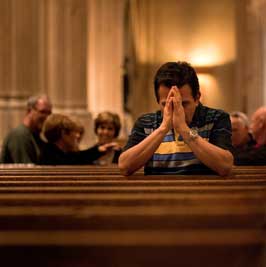WHITE PAPERS
Video: Benchmark Project Testimonial by College Station Christ UMC
Certain forms and publications on this site are provided as Adobe Acrobat PDF files, allowing you to see the form or publication in their original formats, including graphics. To view and print these files, you need to have Adobe Acrobat Reader software installed on your computer. You can download this free software from the Adobe website here.
- A National Projection Model for the Denomination in the US
- A Preliminary Evaluation of the Impact of the Healthy Church Initiative on Worship Attendance
- Classifications of Local Churches Based Upon Key Indicators
- Considerations for Change in the Texas Annual Conference Apportionment Formula
- Local Church Indebtedness and Local Church Vitality: Will the Increase in Local Church Indebtedness Over Past Decades Pay Dividends?
- Reductions in the Number of Districts of an Annual Conference
- Sunday School and Other Small Groups: Substitutes?
- The Construction and Use of Key Local Church Indicators
- The Texas Annual Conference Report - Historical Trends and Annual Projections to 2030
- The Urgency of Young Clergy Recruitment and Planned Responses
- Texas Methodist Foundation Clergy Development Study
- Texas Methodist Foundation Report: Texas New Church Starts 1985 - 2005
- Virginia Annual Conference Report 2008: New Church Starts
- Western North Carolina Annual Conference Report 2009: New Church Starts

Why We Do It
The world is missing out on the hope, truth, and power of the Gospel. The local church remains the best vehicle by which its message is spread. The secular press continues to challenge the work of the Church with its predictions of decline and rejection among the younger generations. Instead, the local church can grow and prove its capacity to change lives and communities. Growing Christian churches among our mainline denominations and beyond is a real possibility.

What We Use
- Local Church Geodata
- Local Church Indicators: Worship Attendance and Congregational Giving—past 5 years
- Local Church Spending Patterns—Past 5 years
- Pastoral leadership—Past 10 years
- Establishment of Benchmarks
- Statistical projections—Next 5 years

What We Do
ILCG works side by side with local church leaders to identify internal deficiencies through comparisons with thriving peer group outcomes. Comparisons bring broad solutions that are refined or customized by local church leaders. In the end, the local church becomes more effective in ministry to community and in making disciples of Christ.

How We Do It
ILCG takes a comprehensive approach to measuring and understanding the impacts of the changing composition of churches. Based upon statistical analyses of over 1 million local church records—about 32,000 churches over 28 years — sophisticated simulation models have been developed to scrutinize past experience, clarify present standing and discern the factors that provide the foundation for a vibrant future.


